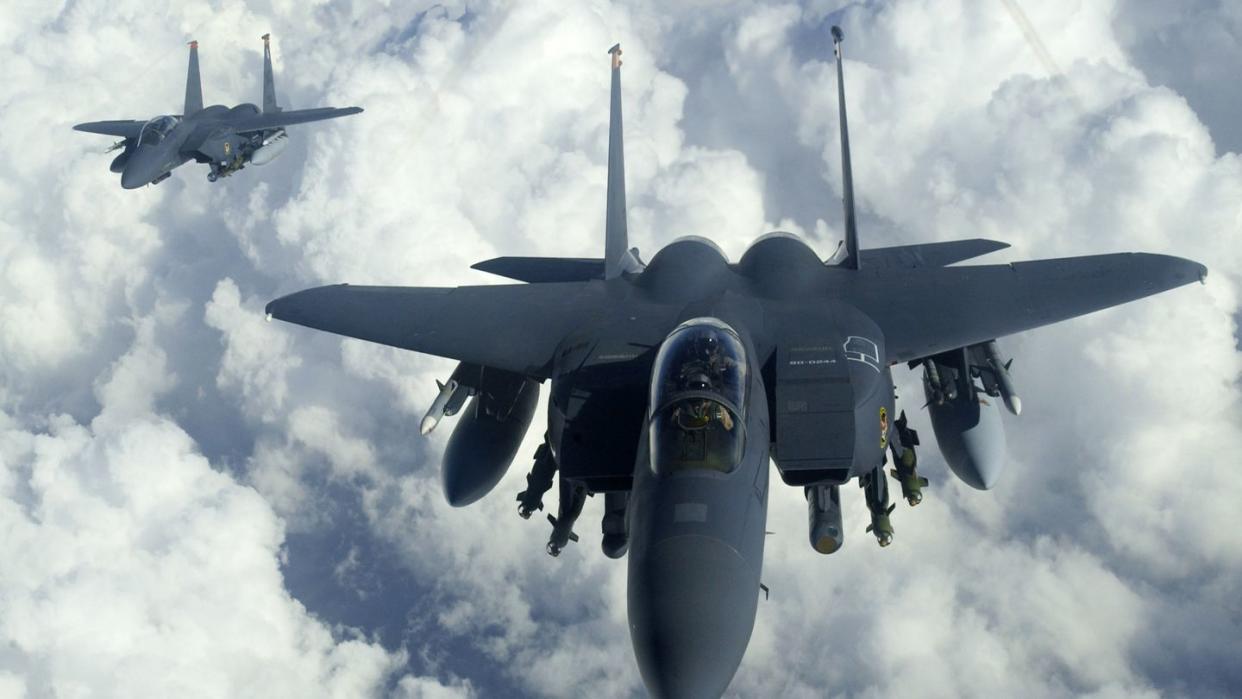When Three F-15 Jet Fighters Raced a Solar Eclipse

"Hearst Magazines and Yahoo may earn commission or revenue on some items through these links."
A trio of F-15E Strike Eagle fighter jets chased the moon’s shadow across the Earth during a solar eclipse.
The jets, taking off from southern Idaho, stayed in the moon’s shadow for three minutes. The speed of the Moon, and the speed of the rotation of the Earth, meant the planes really had to shovel to stay within the darkness created by the eclipse.
During a solar eclipse, large parts of the planet experienced partial or total darkness for a handful of minutes as the Moon passed in front of the sun. During a solar eclipse the day turns into night, as the Moon blocks sunlight. The moon itself glows dimly due to scattered and refracted light shining on it.
As this National Geographic video shows, three F-15 Strike Eagles based at Mountain Home Air Force Base, Idaho tried to race the eclipse as long as they could. The problem: the moon’s shadow moved at 1,700 miles an hour, while the Earth rotates at 1,000 miles an hour. The goal was to stay in the moon’s shadow for three minutes.
The F-15E Strike Eagle is one of the fastest plane in U.S. inventories. A fighter-bomber variant of the F-15C Eagle, the “Mud Hen” can fly at speeds close to Mach 2.5, or 1,918 miles an hour. That was enough raw speed to accomplish the eclipse mission.
The Air Force isn’t the only service interested in eclipses: in August 2017 the Navy sent two EA-18G Growler electronic attack jets to chase another eclipse. Civilian eclipse chasers also book specialty flights to observe them a little longer than people on the ground, without clouds obscuring their view. They probably didn’t see it as long as these F-15E air crews did, though.
You Might Also Like

